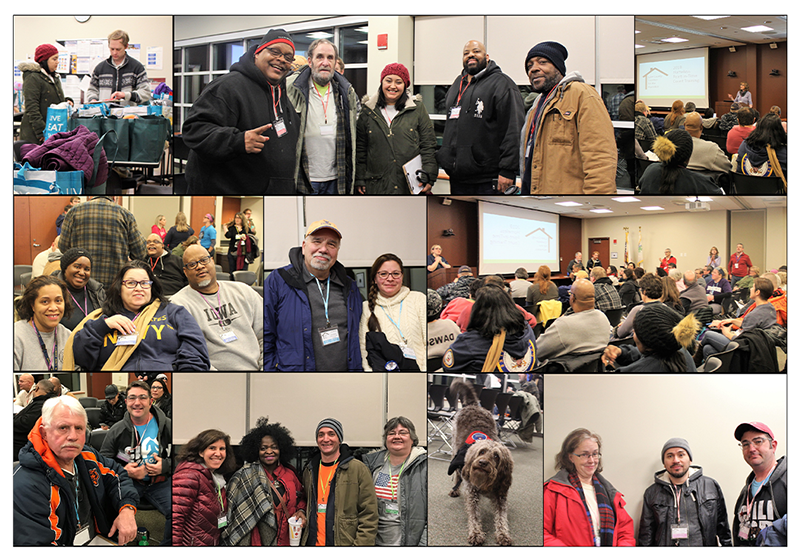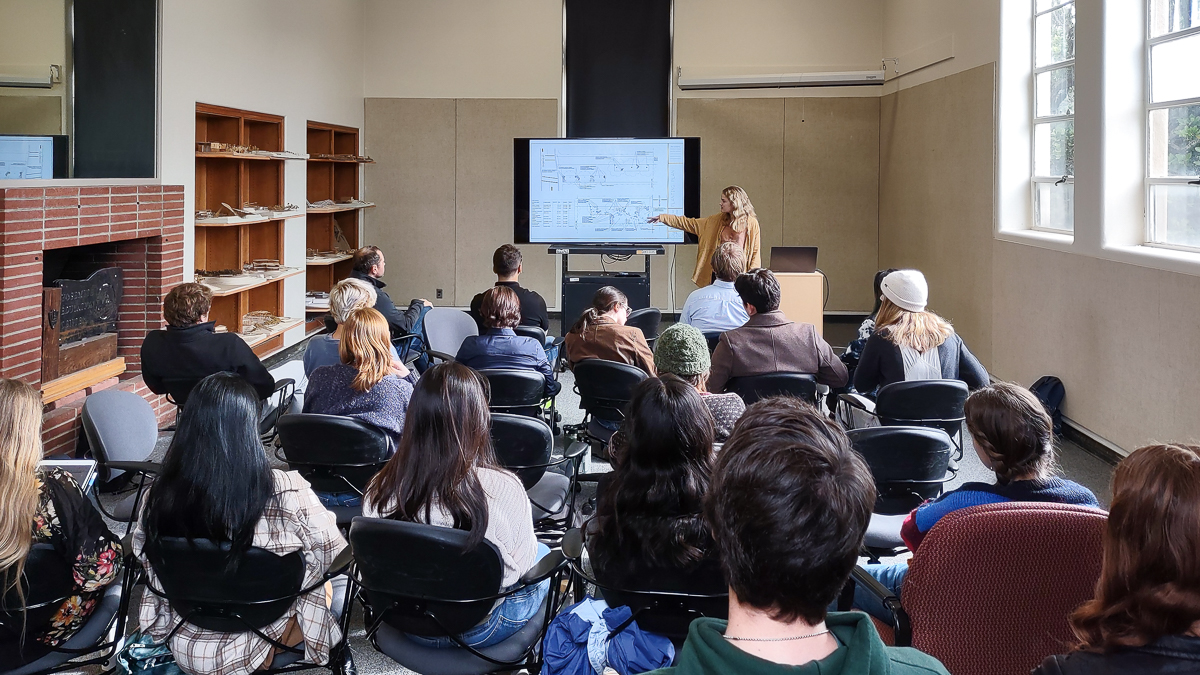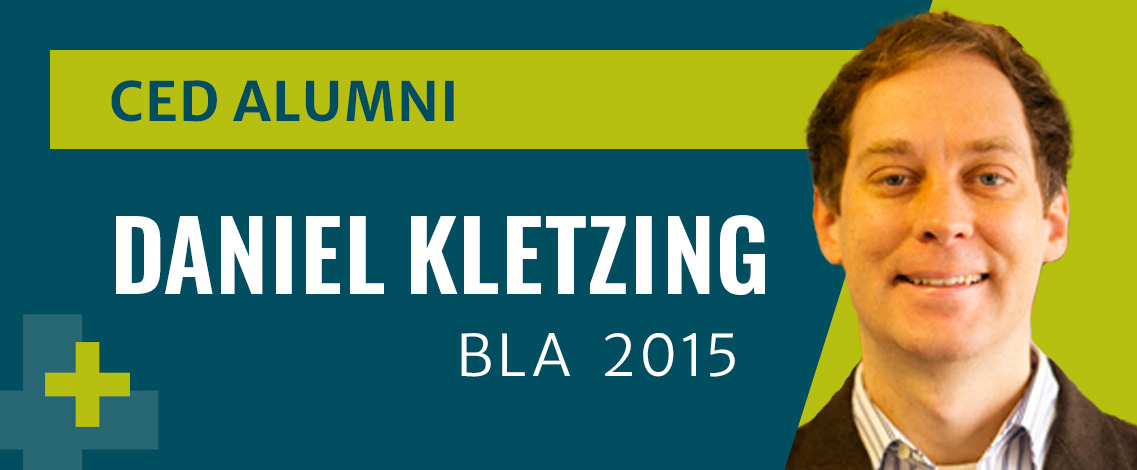CED is always proud to hear about what our alumni are creating in the world. Whether exploring innovative technologies, crafting dynamic site plans, leading community advocacy efforts, or advancing design pedagogy, our alumni’s diverse experiences demonstrate an expansive range of applications for environmental design education. Daniel Kletzing, PLA, ASLA, LEED AP (BLA 2015) is no exception. Currently a lecturer at California Polytechnic State University San Luis Obispo, Daniel has worked in a variety of roles across the country, all while maintaining his dedication to use his skills for the greater good. Daniel generously shared with us how CED professors impact his pedagogy, the moment he knew he wanted to be an educator, his current work with Indigenous communities, and what keeps him inspired through it all.
Tell us about your journey from UGA to California.
I chose UGA for my Bachelor of Landscape Architecture after I visited the program from Chicago (where I grew up) and was impressed with its quality. The program provided a strong foundation for my professional career in Atlanta and Chicago. In Atlanta, I worked for a multidisciplinary engineering firm which focused on parks, trails, and streetscapes. Being community minded, I always wanted to design public spaces for anyone to use, regardless of socioeconomics. Park settings also allow groups of all backgrounds to create new relationships, a topic on which I am most enthusiastic.
In Atlanta I enjoyed volunteering with several organizations, such as Friends of Refugees, where I wrote resumes and applied for jobs for immigrants. I then decided to dive full time into community work in my move to Chicago, where I served in AmeriCorps for a county government on homelessness. One task was managing the annual outreach event. Using GIS skills, I first learned at UGA in a studio with Professor Ron Sawhill, I created a GIS map of suggested locations to look for people experiencing homelessness. After connecting the map to volunteers’ smartphones, we located the highest number of people experiencing homelessness to date that year, allowing us to offer support and get them to shelter.

Volunteer teams meet before going out to search for people experiencing homelessness to offer support.
For the county I also ran educational trainings for social workers to obtain income for their clients experiencing homelessness. I knew that I wanted to continue being an educator and work in social justice and community building, so I decided to earn two Masters: Urban Planning and Landscape Architecture, both from the University of Illinois Urbana Champaign (UIUC). Here, I gained several years of experience teaching classrooms independently with topics ranging from plant ID and site engineering to landscape architecture history. Currently as a lecturer at Cal Poly San Luis Obispo, I teach two studios – a 100-level beginning hand drafting class and a 400-level urban design and construction documents course.
How did you know that academia was where you wanted to be?
After instructing my very first class session, there was a definitive feeling that being a teacher was the most exciting role in which I had ever been. As a lecturer at Cal Poly, I continue this role that I love. Serving students by helping them realize their dreams is deeply meaningful. I enjoy creating courses for students to produce quality portfolios and especially mentoring students one-on-one in the studio every session. At UGA, I had many excellent professors who taught professional skillsets but also were personally encouraging. I can still remember something very affirming that Professor David Spooner said to me in studio, just to name one mentor. As a lecturer now, I constantly build up students in desk critiques while instructing on improvements. I notice that students at times do not realize the high degree of their talent.
We just finished final reviews for the two studios I teach. For the 400-level urban design and construction documents class, we redesigned a street into a pedestrian-only promenade, a real project that the city here, San Luis Obispo, intends to build. I established a connection with the city transportation manager, who came in to meet one-on-one with every student as well as hear their final presentations alongside additional city staff. I designed the course for students to create site analysis and illustrative plans and perspectives using Illustrator, Photoshop, SketchUp, and Lumion before making a full construction package in AutoCAD. Students worked on the CAD survey provided by city engineers. I am excited for their quality drawings and was able to announce to them that the city wants to keep their designs.

Daniel’s urban design and construction documentation course students at Cal Poly San Luis Obispo present final work to city staff.
As a student at UGA, I completed the construction documents course under Professor Bruce Ferguson, a renowned expert on landscape construction. I incorporate principles I learned from Professor Ferguson alongside my construction and engineering professional experience to teach students how to produce quality construction sets. These utilize green infrastructure such as permeable pavers, rain gardens, and CU soil. I remember that Professor Ferguson kept a real Silva Cell in our classroom, so I will have to ask for one from the company when I teach this course again. All my students now have their own excellent construction plans and sections – with Silva Cells. The city transportation manager was interested in using this technology.
In my 100-level hand drafting course I teach students how to use drafting tools while producing quality landscape architecture graphics that I first learned through Professor Ashley Steffens’ graphic communication course at UGA. Garnering from professional experience, I also guided my students through the design process of site measurements and base map creation, site analysis, functional diagramming, and creating illustrative plans and sections while learning scale and design principles for redesign of a large courtyard on campus.
What are you working on now that excites and inspires you?
I also have found meaningful work in my recent research – working with an Indigenous organization, Spirit Farm: Native American Regenerative Farming, on climate change mitigation strategies for Western US tribes. This work couples my design skillset with their knowledge. Because I have success in this collaboration, currently I am specifically interested in researching and writing guidelines for landscape architecture departments across the US to humbly reach out and establish connections with Indigenous groups to work on impactful projects. Since this was my research proposal which led to being named an LAF Olmsted Scholar Finalist, it is encouraging to know that more professionals and academics want to create these collaborations and see them flourish.
My experience shows that many Indigenous organizations are receptive to working with students of US landscape architecture programs. Native American groups often have a vision for restoring their local region and community, and services and resources provided by design students and faculty can plug into that mission to support meaningful environmental and life-enhancing projects. Additionally, Indigenous organizations have expertise to teach landscape architecture students on environmental philosophies and technical methods, creating a two-way egalitarian relationship. Almost all green infrastructure, planting design, soil health, and land management practices I learned at university take root in Indigenous knowledge. Researching Native American methods and working with Spirit Farm has greatly enhanced my landscape architectural knowledge and skillset. Additional partnerships between landscape architecture departments and Indigenous organizations would be exciting. Creating new relationships between diverse groups fuels my inspiration.

